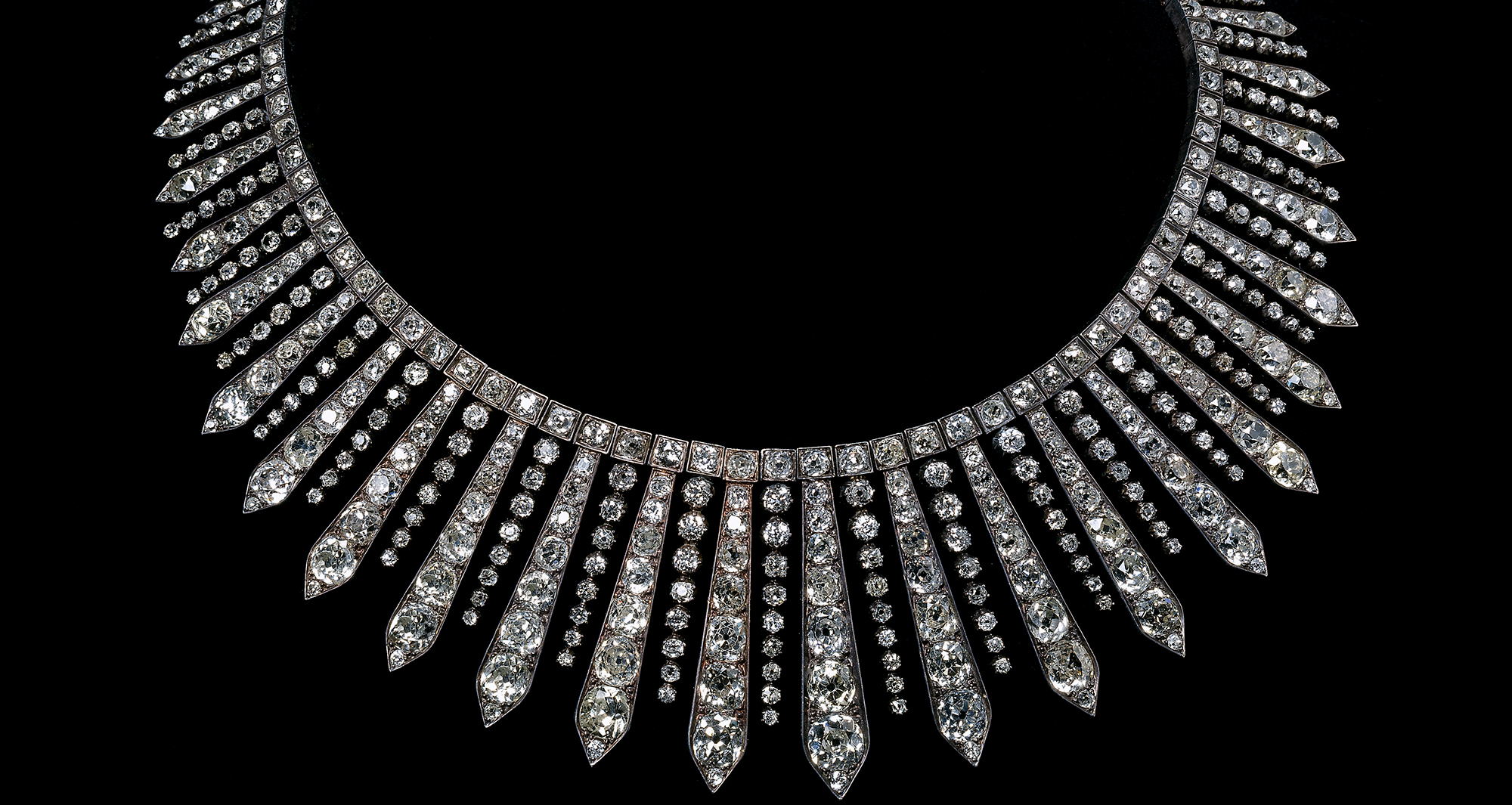
Cacciatori di Tesori. Faerber Collection e l’amore per il gioiello antico
Ida Faerber: «Andiamo dove ci chiama l’oro»
Fondata nel 1968 a Zurigo da Thomas Faerber, la Faerber Collection è oggi uno dei maggiori punti di riferimento per l’acquisto e la vendita di gioielli antichi. Pezzi unici, collezioni risalenti alle origini della lavorazione dei preziosi, perle naturali e gemme rare, trovano qui la maison che li custodisce fino a quando non trovano una nuova vita. A raccontarci la passione per il gioiello vintage e l’evoluzione che questo mercato ha avuto è Ida Faerber, figlia di Thomas, attiva in azienda con il fratello dal 1998.
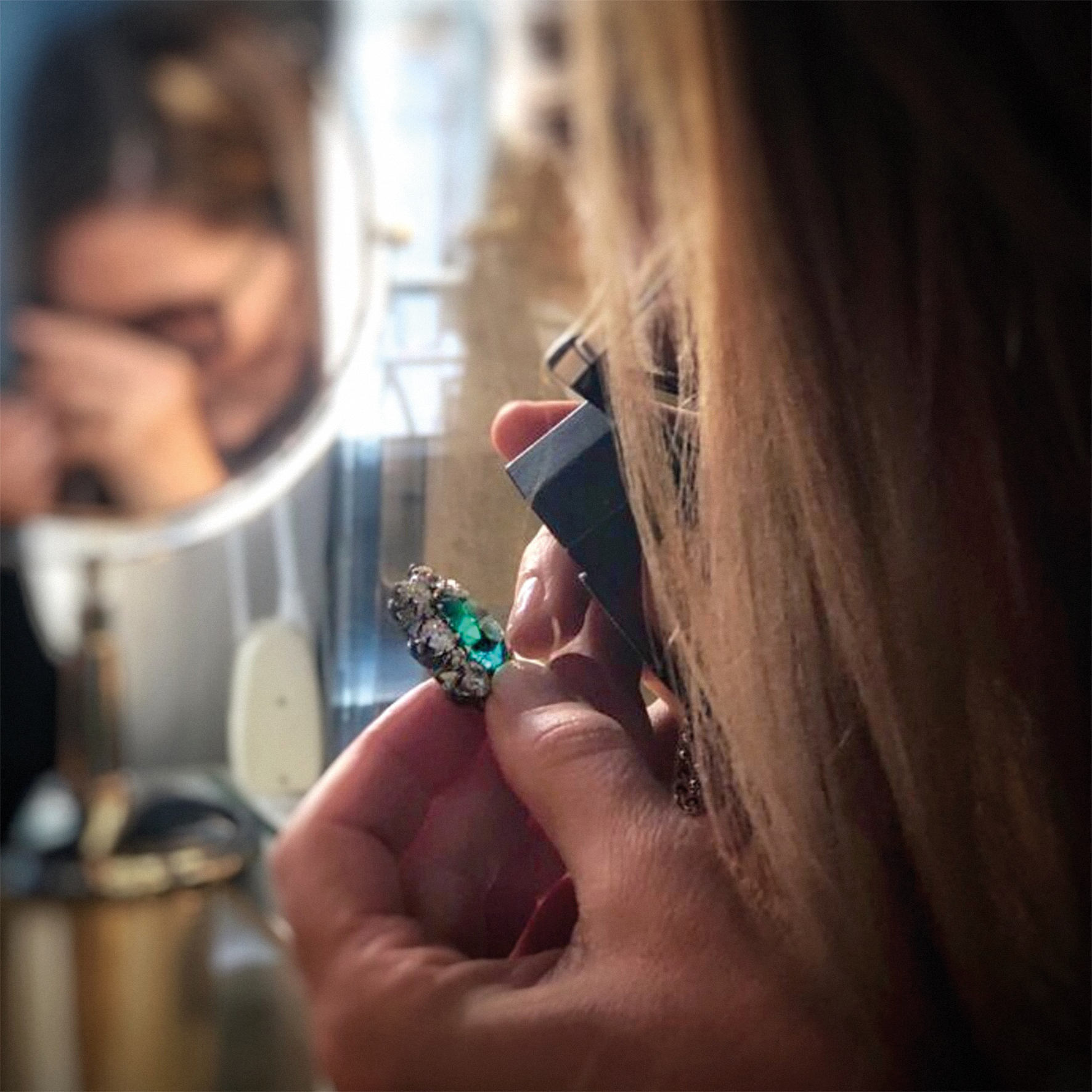
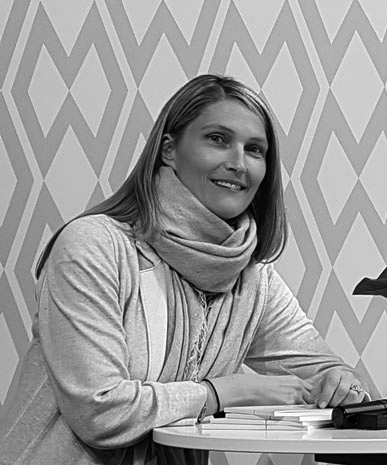
«Da Zurigo, nel 1980, papà (che oggi ha 82 anni ma continua a lavorare con grande passione e dedizione) si è spostato a Ginevra. Lui è un orafo, siamo sempre stati parte di questo mondo e ha capito cosa cercasse il mercato. Le prime uscite di Faerber Collection sono state a Basilea, in quegli anni la fiera di riferimento per il settore. Lui fu il primo in assoluto a proporre ai buyer il gioiello vintage e le gemme storiche. L’azienda negli anni è molto cambiata e si è ingrandita. Quando io e mio fratello Max siamo entrati, lui si è subito occupato di aprire un ufficio a New York poi, con dei partner, siamo arrivati anche a Hong Kong. Oggi io mi occupo del mercato europeo, papà di quello americano, Max di quello asiatico» racconta Ida Faerber.
◗ Perché vi siete avvicinati al mondo del gioiello vintage?
«Quello dei gioielli antichi, vintage è un mondo straordinario: i gioielli antichi hanno una storia incredibile alle spalle e ognuno di essi è stato creato in modo unico, nelle varie epoche. È impossibile non appassionarsi al settore. Pensiamo, ad esempio, al Rinascimento: i gioielli in quel periodo erano delle creazioni straordinarie realizzate da maestri artigiani che si preoccupavano di raccontare una storia attraverso di loro. Una tendenza che ha fortemente influenzato anche il XVIII secolo: in quest’ epoca i monili erano creati per comunicare, per trasmettere messaggi. Si prestava poca attenzione al costo della materia o alla perfezione e si dava grande spazio alla poesia: erano disegni che si univano per dare forma ad una “scenografia” da indossare.
Nel XIX secolo la tecnica si è evoluta e i maestri orafi hanno dato forma a gioielli di incredibile contemporaneità. Alcuni bracciali o anelli sembravo fatti per i giorni nostri: penso sia incredibile che questi pezzi continuino la loro vita da oltre 100 anni. C’è ancora così tanto amore in ciò che trasmettono. Poi è arrivato il platino che ha portato una prima rivoluzione in questo mondo resa ancora più marcata dalla figura di Harry Winstein con il suo nuovo modo di incastonare le pietre».
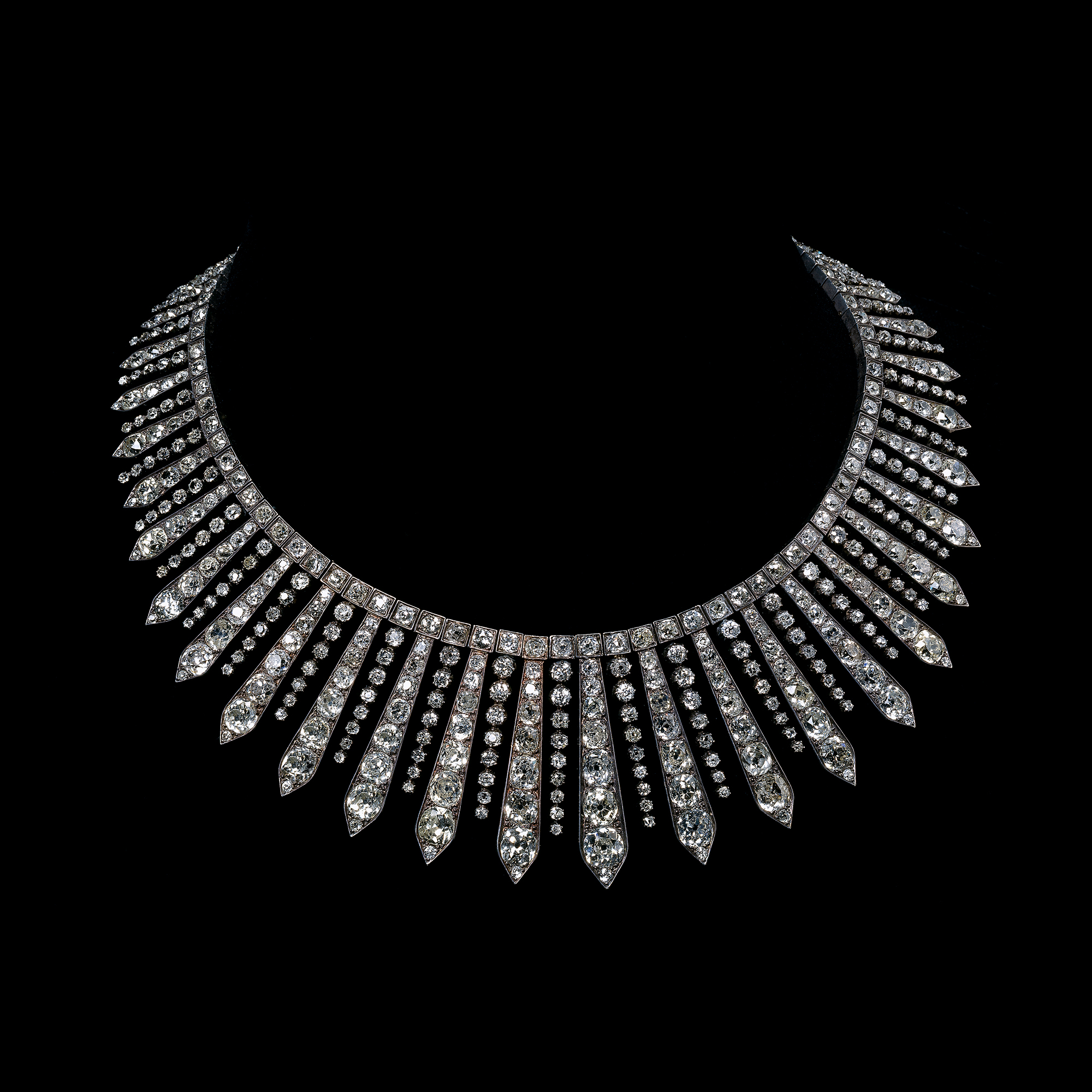
◗ Come è cambiato il settore negli ultimi 10 anni?
«È arrivato Internet. Credo che questo abbia portato il vero cambiamento. Per due motivi: il nostro è un settore molto chiuso, di nicchia ma con l’avvento di Internet le persone hanno iniziato a documentarsi e a trovare le risposte sul web. Prima se volevi sapere quanto vale un tuo braccialetto dovevi cercare qualcuno come noi, leggere un libro, documentarti in biblioteca. Oggi la risposta la puoi trovare su Internet perché tutto è catalogato. Quindi penso che sia stato un enorme cambiamento. Le stesse case d’asta si sono dovute adattare, sono cresciute moltissimo e hanno conquistato parti enormi di mercato promuovendo anche sul web la vendita di pezzi più o meno eccezionali. Molto velocemente, il potere del marketing unito al digitale ha creato un mix esplosivo passando da “importanti” a “estremamente importanti”. Per me questi sono i due cambiamenti fondamentali e, forse, un terzo cambiamento è stato quando tutte le compagnie aeree hanno iniziato a diventare “democratiche” con i prezzi: viaggiare oggi è molto più facile rispetto al passato e quindi molti mercati sono aperti a molte più persone. Ci sono anche dei trend che influenzano e quindi modificano il settore: oggigiorno si tende ad avere qualcosa di diverso per avere qualcosa di unico. Si stanno sviluppando anche i concetti di circolarità e sostenibilità che invogliano all’acquisto del vintage per riutilizzare, reinventare, ricreare. Quindi penso che tutti partecipino a questa nuova ondata. Quando ho iniziato i rivenditori avevano le loro nicchie, lavoravano in aree specifiche ed erano i veri influencer: facevano anche cultura del gioiello. Oggi tutti sono consapevoli di ciò che è raro e bello, siamo molto informati: quando una casa d’asta batte una grande collezione lo vieni a sapere da internet e dal web ricevi anche le informazioni».
◗ Trend e tendenze sono presenti anche nel gioiello antico?
«Sì, quando ho iniziato, tutti volevano braccialetti decorativi e l’art déco era al suo apice. Poi è cambiato: la moda ha cominciato a farla da padrone. Pensa a “tutte le Rihanna”, a tutte le star testimonial dell’industria del fashion. Se le osservi trasudano di stile anni ’80, indossano gioielli come le grandi catene d’oro, i pesanti ciondoli in stile ebraico che si adattano a questo tipo di abiti (pantaloni larghi, top corti,…) uno dei motivi che oggi le produzioni di quegli anni sono estramamente richieste. La gente vuole comprare gioielli, ma vuole anche indossarli. In voga anche nel settore vintage i grossi braccialetti d’oro degli anni ’40, gli orecchini Diamond Riviera».
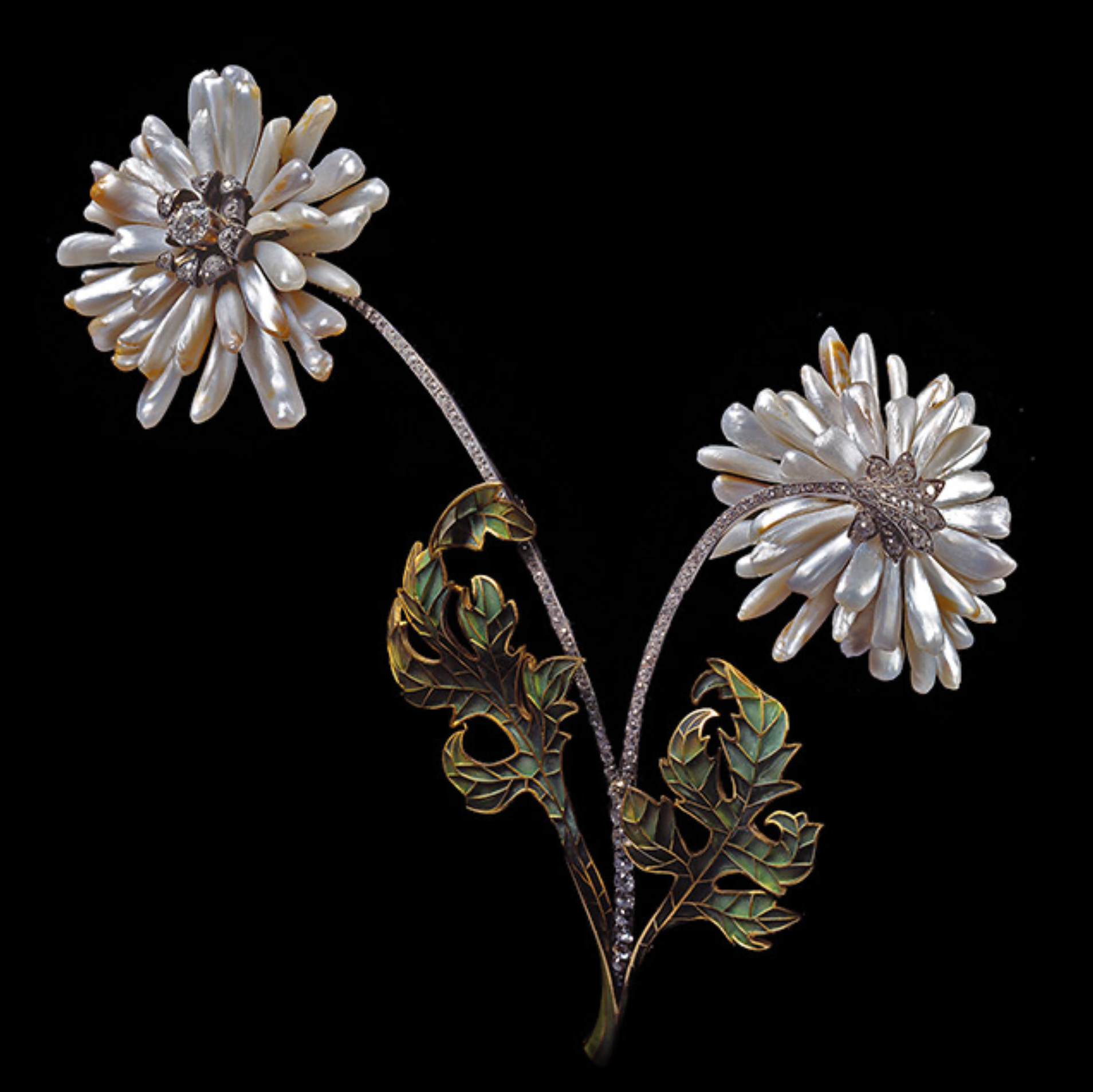
◗ Il gioiello vintage è anche una forma di investimento?
«Sì. Penso soprattutto agli asiatici che ci chiedono spesso se “è un buon investimento”. Guardano molto alla rivalutazione di un pezzo. Cento o cinquanta anni fa acquistare un gioiello aveva un significato sociale perché era un dono: un monile si regalava nelle occasioni speciali (matrimonio, laurea, comunione) e quindi ogni prezioso faceva parte della vita e poi dei ricordi, era molto legato al significato intrinseco e meno al valore. Al giorno d’oggi, sempre più persone vogliono comprare qualcosa ma vogliono anche sapere quanto vale. Poi penso che in America sia un po’ diverso: la gente compra perché si diverte».
◗ Possiamo dire quindi che la regola della narrazione è la cosa principale, più importante dell’antico?
«Sì, penso che l’antiquariato sia qualcosa che ha bisogno di essere spiegato e che la gente deve capire. Quando compri un marchio e compri gioielli moderni c’è così tanto marketing attorno ad essi che non c’è nulla da raccontare: i grandi brand creano desiderio attorno al gioiello e poi vendono. Nei pezzi antichi la gente ha bisogno di essere istruita al riguardo, si racconta la storia, la provenienza, spieghiamo non solo la preziosità del disegno e del materiale ma anche il significato di un pezzo, la sua vita. Ecco perché dico sempre che dovresti comprare ciò che ti piace in gioielleria anche se non si rivelerà un buon investimento».
◗ Dove acquisite i gioielli che poi rivendete?
«Siamo dei cercatori di tesori: andiamo dove ci chiama l’oro (ride, ndr.). Compriamo ovunque nel mondo sia attraverso il passa parola che nelle fiere specializzate, così come alle aste o da altri dealer. Noi siamo prevalentemente un B2B anche se abbiamo una piccola apertura verso le attività B2C, che però non rappresenta il core business della Faerber Collection»
◗ E invece a chi vendete?
«I nostri mercati di riferimento, per quanto riguarda la vendita, sono sicuramente gli Usa, che hanno un bacino di clienti molto grande, così come l’Europa, che apprezza molto il gioiello vintage. L’Asia è un mercato un po’ più tiepido se guardiamo alla Cina ma se allarghiamo lo spettro notiamo che Thailandia, Indonesia e India sono molto interessati al gioiello antico e loro si rivolgono prevalentemente al nostro ufficio di Hong Kong».
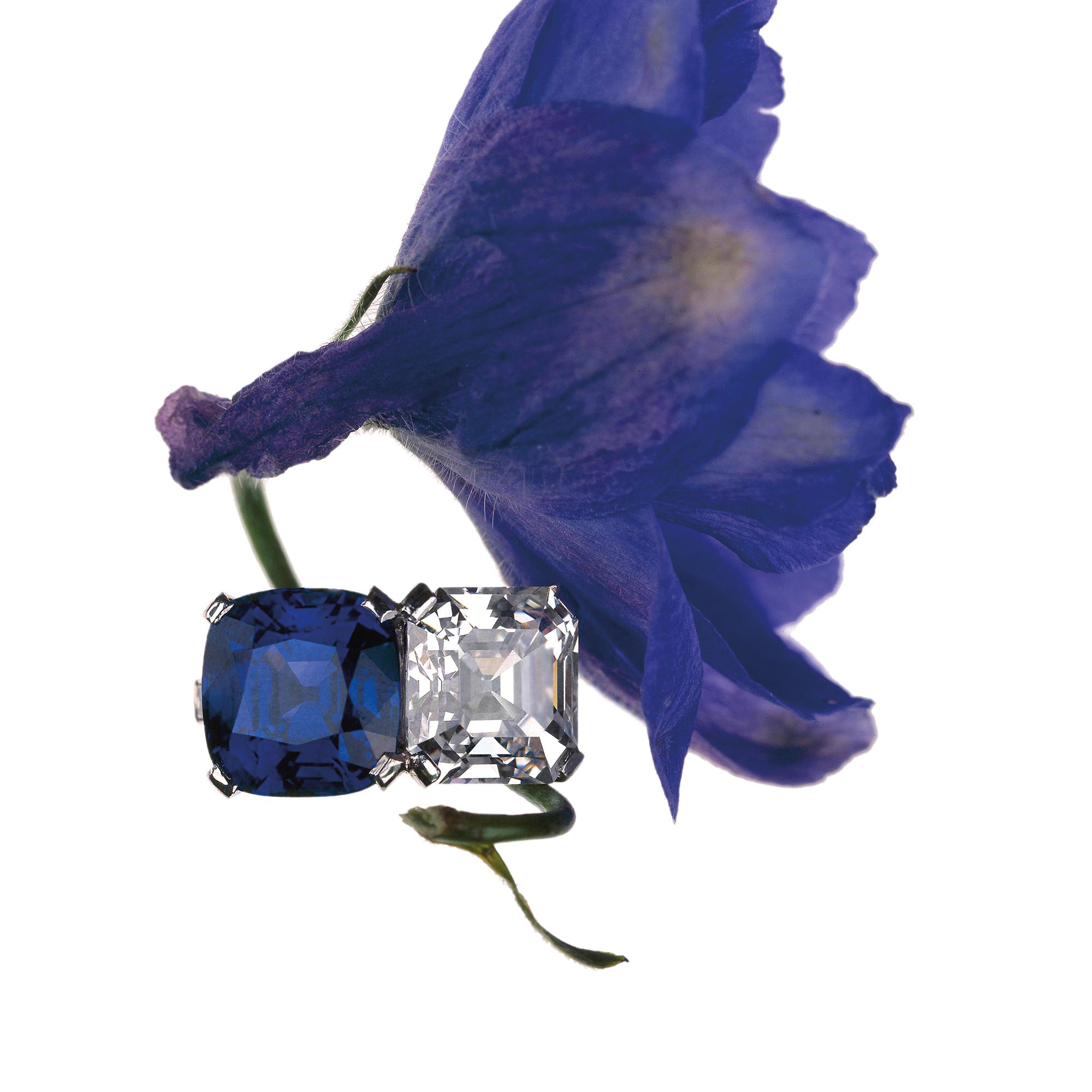
Faeber Collection: 4 sedi e un team di 5 esperti L’azienda oggi conta un ufficio a Ginevra, uno a New York, uno a Parigi e uno a Hong Kong ed è co-fondatore di GemGenève assieme a Ronny Totah. La loro attività di ricerca di gioielleria antica, vintage e di pietre preziose dal passato è mondiale. Del team Faerber Collection, oltre a Thomas, Ida e Max fanno parte anche altri due membri, arrivati nel 1988 e nel 1999: Alberto Corticelli, stabilito a Ginevra, e Philippe Atamian a Hong Kong. Tutti e cinque uniscono le loro diverse reti, esperienze, competenze e sensibilità, condividendo la stessa devozione all’integrità e alla discrezione.
Treasure Hunters. Faerber Collection and the love of antique jewelry
Founded in 1968 in Zurich by Thomas Faerber, the Faerber Collection is now one of the major outlets for buying and selling antique jewelry. One-of-a-kind pieces, collections dating back to the origins of precious craftsmanship, natural pearls and rare gems, find here the maison that treasures them until they find a new life. Telling us about her passion for vintage jewelry and how this market has evolved is Ida Faerber, Thomas’ daughter, who has been active in the company with her brother since 1998. “From Zurich in 1980, Dad (who is now 82 years old but continues to work with great passion and dedication) moved to Geneva. He is a goldsmith, we have always been part of this world, and he understood what the market was looking for. Faerber Collection’s first releases were in Basel, at that time the leading trade fair for the industry. He was the first ever to offer vintage jewelry and historical gems to buyers. The company has changed a lot over the years and grown. When my brother Max and I joined, he immediately took care of opening an office in New York then, with partners, we came to Hong Kong as well. Today I deal with the European market, Dad with the American market, and Max with the Asian market,” Ida Faerber says.
◗ Why did you approach the world of vintage jewelry? “The world of antique, vintage jewelry is an extraordinary world: antique jewelry has an incredible history behind it, and each of them was created in a unique way, in different eras. It is impossible not to be passionate about the field. Think, for example, of the Renaissance: jewelry in that period was extraordinary creations made by master craftsmen who cared about telling a story through them. A trend that also strongly influenced the 18th century: in this ‘era, jewelry was created to communicate, to convey messages. Little attention was paid to the cost of the material or to perfection, and great space was given to poetry: they were designs that came together to shape a “setting” to be worn. In the 19th century, the technique evolved and master goldsmiths shaped incredibly contemporary jewelry. Some bracelets or rings looked like they were made for today-I think it’s amazing that these pieces have continued their life for over 100 years. There is still so much love in what they convey. Then came platinum, which brought a first revolution to this world made even more pronounced by the figure of Harry Winstein with his new way of setting stones.”
◗ How has the industry changed in the last 10 years? “The Internet has come along. I think that has brought the real change. For two reasons: ours is a very closed, niche industry, but with the advent of the Internet, people started to read up and find the answers on the Web. Before if you wanted to know how much one of your bracelets is worth you had to look for someone like us, read a book, document yourself in the library. Today you can find the answer on the Internet because everything is catalogued. So I think it’s been a huge change. The auction houses themselves have had to adapt, they have grown a lot and they have captured huge parts of the market by also promoting the sale of more or less exceptional pieces on the web. Very quickly, the power of marketing combined with digital has created an explosive mix going from “important” to “extremely important.” For me, these are the two fundamental changes, and perhaps a third change was when all airlines started to become “democratic” with pricing: travel today is much easier than in the past, and so many markets are open to many more people. There are also trends that influence and therefore change the industry: nowadays there is a tendency to have something different in order to have something unique. There are also developing concepts of circularity and sustainability that entice people to buy vintage to reuse, reinvent, recreate. So I think everybody is participating in this new wave. When I started, retailers had their niches, worked in specific areas and were the real influencers: they also made jewelry culture. Today everyone is aware of what is rare and beautiful, we are very informed: when an auction house beats a big collection you learn about it from the Internet, and from the web you also get the information.”
◗ Are trends and tendencies also present in antique jewelry? “Yes, when I started, everyone wanted decorative bracelets, and art deco was at its peak. Then it changed: fashion started to take over. Think of “all the Rihanna’s,” all the star testimonials in the fashion industry. If you look at them they ooze 80s style, they wear jewelry like the big gold chains, the heavy Jewish-style pendants that go with this kind of clothes (baggy pants, short tops,…) one of the reasons that today the productions of those years are extraordinarily in demand. People want to buy jewelry, but they also want to wear it. Also in vogue in the vintage sector are large gold bracelets from the 1940s, Diamond Riviera earrings.”
◗ Is vintage jewelry also a form of investment? “Yes. I think especially of Asians who often ask us if ‘it’s a good investment.’ They look a lot at the revaluation of a piece. A hundred or fifty years ago, buying a piece of jewelry had a social meaning because it was a gift: a jewelry was given on special occasions (wedding, graduation, communion) and so each precious was part of life and then memories, it was very much about intrinsic meaning and less about value. Nowadays, more and more people want to buy something but they also want to know what it is worth. Then I think in America it’s a little different: people buy because they enjoy it.”
◗ So can we say that the rule of storytelling is the main thing, more important than antiques? “Yes, I think antiques is something that needs to be explained and that people need to understand. When you buy a brand and you buy modern jewelry there is so much marketing around it that there is nothing to narrate: the big brands create desire around the jewelry and then they sell. In antique pieces people need to be educated about it, we tell the story, the provenance, we explain not only the preciousness of the design and the material but also the meaning of a piece, its life. That’s why I always say you should buy what you like at the jewelry store even if it won’t turn out to be a good investment.”
◗ Where do you acquire the jewelry that you then resell? “We are treasure hunters: we go where the gold calls us (laughs, ed.). We buy anywhere in the world either through word of mouth or at trade shows, as well as at auctions or from other dealers. We are predominantly a B2B although we have a small opening to B2C activities, but that is not the core business of Faerber Collection.”
◗ And who do you sell to instead? “Our target markets, as far as sales are concerned, are definitely the U.S., which has a very large customer base, as well as Europe, which really appreciates vintage jewelry. Asia is a somewhat more lukewarm market if we look at China, but if we broaden the spectrum we notice that Thailand, Indonesia and India are very interested in antique jewelry, and they mainly go to our Hong Kong office.”

POST COMMENT